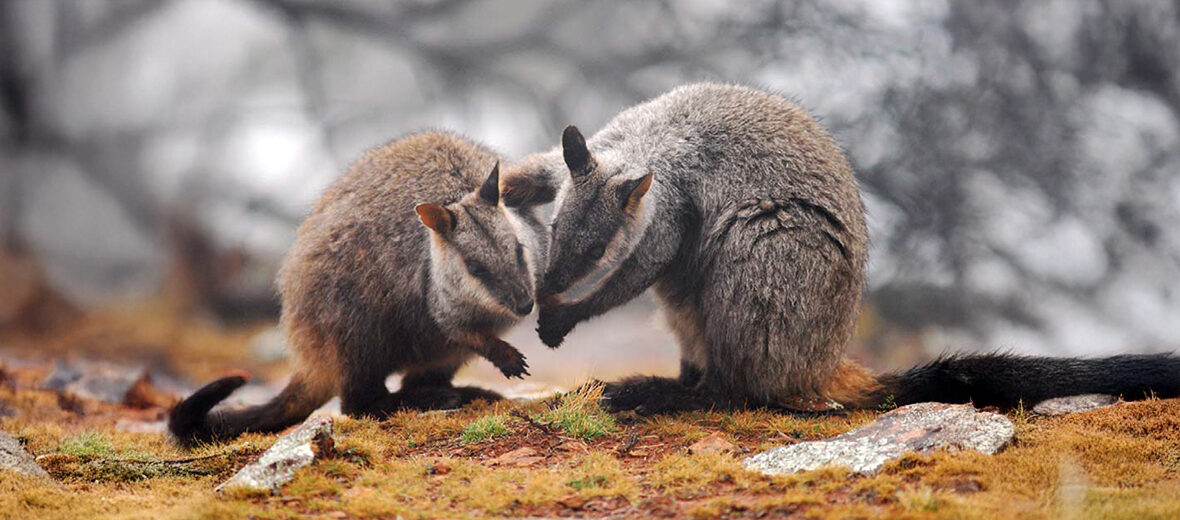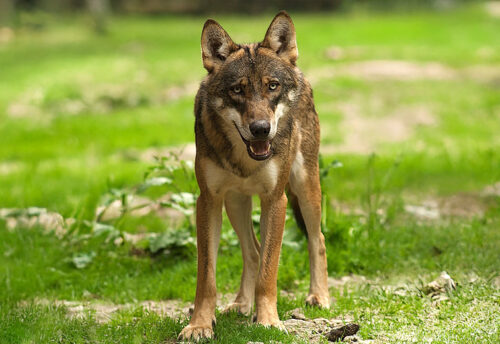
The brush-tailed rock-wallaby, aka small-eared rock-wallaby, dwells among rock piles, cliff lines, and vegetation along the Great Dividing Range. Populations have been severely declining in the south and west of their range. These rock-wallabies face the threats of habitat loss and destruction at the hands of farming and ranching; hunting; trapping; and invasive species, that can bring about predation from red foxes, and they also face the threat of disease. The IUCN lists these critters as Vulnerable. Their population trend is listed as decreasing.
First the Stats…
Scientific name: Petrogale penicillata
Weight: Up to 17.64 lbs.
Length: Up to 22.83 inches, plus up to a 27.56 inch tail
Lifespan: Up to 14 years
Now on to the Facts!
1.) Sadly, due to a massive bushfires in southeast Australia around 70% of all the wallaby’s habitat has been lost as of January 2020.
2.) In 2018, the southern brush-tailed rock wallaby was officially declared as the mammal emblem of the Australian Capital Territory (ACT), even though they have not been seen in the wild in the ACT since 1959.
3.) They were first described by John Edward Gray in 1827.
4.) Like other rock-wallabies they are nocturnal (active at night).
5.) They can jump up to 13 feet in a single bound!
But wait, there’s more on the brush-tailed rock-wallaby!
6.) As part of the acclimatization movement of the late 1800s, governor Grey introduced these and 4 other species of wallabies (including the rare parma wallaby) to islands in Hauraki Gulf, near Auckland, New Zealand, where they quickly became exotic pests.
7.) Groups of females will utilize a single male for reproduction.
Did you know…?
There are just an estimated 20,000 wild individuals remaining, to date.
8.) Females undergo up to a 31 day gestation (pregnancy) that yields a single joey. The joey remains in the marsupium (pouch) for up to 7 months.
9.) Eradication is currently underway, after initial protection for review of their Australian populations and being returned to Australia. Between 1967 – 1975, 210 rock-wallabies were captured on Kawau Island and returned to Australia, along with 1,000s of other wallabies.
10.) These wallabies were once common throughout southeast Australia, but due to clearing of native habitat, exotic plant introduction, predation by introduced species and changing fire patterns as a result of climate change they have been wiped out from much of their southern and western ranges.
Now a Short Brush-Tailed Rock-Wallaby Video!
Be sure to share & comment below! Also, check out the Critter Science YouTube channel. Videos added regularly!

Want to suggest a critter for me to write about? Let me know here.
Some source material acquired from: Wikipedia & IUCN
Photo credit: Power ML, Emery S, Gillings MR



